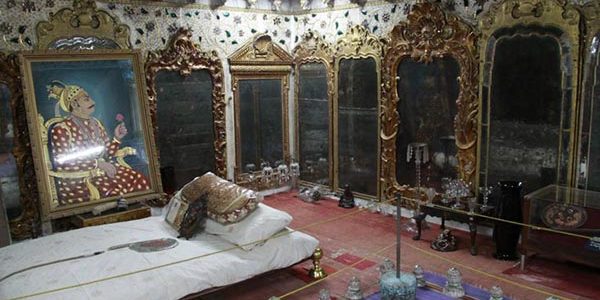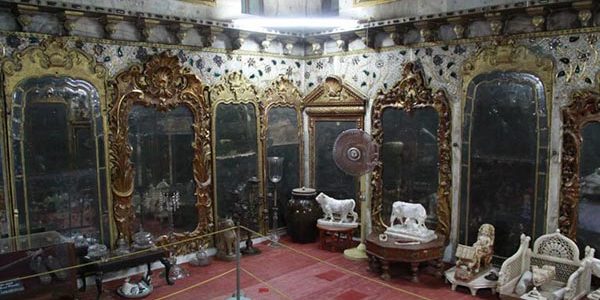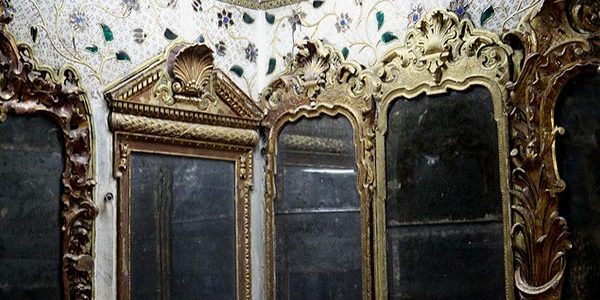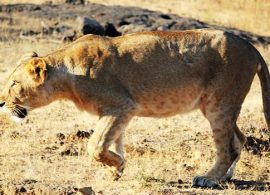
DAY 1
ARRIVE AHMEDABAD
Arrival at Ahmedabad in the morning, airport of our local representative and transfer to hotel. In the afternoon, visit the Gandhi Ashram, SidiSaiyed Mosque, AdalajStepwell and Shreyas Folk & Art Museum .Dinner and overnight at the hotel.
Ahmedabad was founded in 1411 by Sultan Ahmed Shah, from whom it took its name. In the sixteenth century was celebrated as one of the most beautiful cities of India. Even today you can visit many palaces and mosques.
Characteristic of the old part of town are the “Pol”, settlements that form a sort of small village has a square, the well areas to care for the animals and are surrounded by the Haveli, the ancient merchants’ houses, lavishly decorated.
Gandhi Ashram : Here Gandhi started his struggle in favor of the Untouchables in 1917, when he founded the Sabarmati Ashram, where he lived for about 15 years. Today we are manufacturing spinning wheels, handmade paper and other craft products, unadorned rooms where Gandhi lived turned into a museum.
SidiSayed Mosque : One part of the wall in the old citadel of the mosque built by Ahmed Shah’s slave, SidiSayed, is celebrated the world over for its exquisite stone window tracery – a superb & peerless example of delicate carving that transforms stone into filigree.
Adalaj Step-well : It is situated 17kms north of Ahmedabad. The step well at the village of Adalaj is another fine example of this magnificent architectural form. AdalajVav is richly carved, every pillar and wall surface covered with leaves and flowers, birds and fishes and friezes of ornamental designs.
Shreyas Folk Museum :Shreyas Folk Museum is an educational museum exhibiting folk arts and crafts of Gujarat. It is located 2.5km west of Sabarmati in the suburbs of Ahmedabad district. As the name suggests, the exhibits at the museum include art, craft, textile and clothing, coins, weapons, toys, costumes, masks, puppets and musical instruments. One of the highlights at this museum is a complete elephant skeleton (3.19m high). Photography is not allowed.
Museum remains open from Tuesday to Saturday: 3:00 to 5:30 pm
Sunday: 10.30 am to 1:30 pm, 3:00 to 5:30 pm.
Museum remains closed on: Mondays, (weekly holiday)
Nine public holidays: Raksha Bandhan, Janmashtmi, Dashera, Dipawali, New Year, Bhai Beej, Dhuleti, Uttarayan, Mahashivratri
Ten days around Diwali and fifteen days in Summer.
Overnight stay at Ahmedabad.

DAY 2
AHMEDABAD / CHAMPANER (155KMS) / JAMBUGHODA (35KMS)
Breakfast, departure to Jambughoda (about 190 km, approx. 4 h). Champaner to stop along the way.
Champaner – This city, located at 47 K in the north-east of Vadodara, was conquered in 1484 by Sultan Mahmud, and he renamed Begara Muhammadabad.
Named World Heritage Site by UNESCO, counts 114 monuments of historical and archaeological interest, among them stand the mosque of Jama Masjid, for its impressive interior courtyard, its porches, beautiful arches and slender minarets.
Worth a visit also Shahr Masjid, with its row of columns, domes and delicate mihrab (niche facing Mecca) and Nagina Masjid with a charming porch.
Beside the village is built on three levels of the Pavagadh Hill, a hill topped by the ruins of a fortress. According to Hindu legend, the hill would be a fragment of the Himalayas that the Monkey God Hanuman took away with him to Lanka in one of the episodes recounted in the epic Ramayana – hence the name Pavagadh, which means “quarter of a hill.”
Later we drive to Jambughoda, hotel accommodations for dinner and overnight.
Later we drive to Jambughoda, hotel accommodations for dinner and overnight.

DAY 3
JAMBUGHODA
Breakfast at hotel.Full day excursion to the picturesque town of Chotta Udaipur and characteristic villages of the Bhil and Rathwa.
Chotta Udaipur – The essence of the town, however, is that it lies in the heart of a tribal area with rich indigenous history and culture. Every Saturday there is a haat or tribal market. The town is a good base from which to explore the surrounding tribal villages, particularly in the Rathwa communities. The Tribal Museum is also worth a visit, though of course not nearly as important as day-to-day interaction with people alive today.
Overnight at Jambughoda.

DAY 4
JAMBUGHODA / MODHERA (270KMS) /PATAN (38KMS) / POSHINA (140KMS)
Breakfast at hotel. Check out and departure for Poshina (ca. 290 km, approx. 5 h.) enroute visiting Modhera Sun Temple &Patan.
Modhera. This small town has an ancient temple that is now partially in ruins: Temple of the Sun This dates back to 1027 and was built to commemorate a victory against a coalition Hindu Muslim Sultan who raided the area. The temple is characterized by rich decorations and panels carved with bas-reliefs. The shrines of Ganesh, Vishnu and Shiva’s incarnation surround an artificial lake on three sides, while the main temple and complete the rectangle shows 52 columns in elaborately carved. It is architecturally similar to the “Sun Temple” of Konarak in Orissa.
Patan was the capital of an ancient Hindu kingdom before being sacked by Mahmud of Ghazni in 1024. Despite retains few traces of past splendor, has more than 100 Jain temples and is famous for its silk saris”patola”.One of the attractions is a well priciali stepped restored boast some of the most beautiful sculptures of Gujarat. Built in 1050, this well is the oldest of Gujarat and is very well preserved, thanks to restoration work completed in 80 years to remove sediment.
Dinner and overnight at the hotel.

DAY 5
POSHINA (Visit to the tribal villages)
Days entirely dedicated to the visit of tribal villages around Poshina. You will have the opportunity to discover the customs of ethnic groups and Garacia Bhil and visit the temple of Ambaji, dedicated to the mother goddess Amba.
Garasia – Contrary to other ethnic groups, living in the GarasiaPoshina, at the confluence of the rivers and Aakar Sabarmati, in north Gujarat, bordering Rajasthan. Among Garasia is generally widespread monogamy marriages are contracted between persons of the same clan, but not among members of the same village and among people with family ties. Can be combined or occur as a result of a leak. It ‘s customary for couples to escape for a trial period, in which case the bride’s father is given as compensation a sum of money, if the union fails, the wife comes home with another sum to be delivered to its parent . Garasia I believe in Bhagwan, the figure of the supreme God, which is never personified. Their traditional offerings are small horses in red clay, which are usually placed under trees or near sacred rocks or water sources, elements that are associated with the strength of spirits. Little is known about these sanctuaries, religious observances and rituals related to the terracotta horses are given in case of need and help maintain peace in the life of the village.
Dinner and overnight at Poshina.

DAY 6
POSHINA / LITTLE RANN OF KUTCH (250KMS)
After breakfast, depart for Little Rann Of Kutch.
The Little Rann Kutch is a depression that during the rainy season is first invaded by salt water and then the Indian Ocean and fresh water of the rains, becoming a pescosissima area of brackish water. With the end of the rains the waters recede, creating arid areas and wetlands, and the latter are to winter thousands of migratory birds including flamingos and cranes until the arrival of summer. These characteristics make it a unique ecosystem. The Little Rann and ‘the last place where a few surviving specimens (three thousand) dell’onagro, the Indian wild ass (EquushemionusKhur), an ancient animal that the Sumerians used to pull carts. In the Little Rann has focused Agaryas ethnicity, dedicated to the extraction of salt from the desert during the period that goes from the end of the monsoon in early summer, then from October to April. After their take over of the fishermen, that during the rains, tweak their own networks and surf the brackish waters, especially shrimp fishing.
Dinner and overnight in Little Rann Of Kutch.

DAY 7
LITTLE RANN OF KUTCH
After breakfast at hotel, excursion to the little Rann of Kutch villages, the Indian province that lies between the deserts of Sind and Thar, near the border with Pakistan. Here, in remote villages in the desert of salt, interesting people live, the Rabari, Banni, the Koli, Harijan and the others, who live in round huts interior whitewashed and inlaid with many mirrors.
Rabari – Myths and legends haunt the history and origins of the Rabari in Gujarat, as mysterious as any other tribe, whose lifestyle has intrigued many researchers. Related to Shiva, which according to legend, descended through their ancestor Sambal, are one of the last nomadic peoples of the world. Even today, ancient routes traverse through the arid plains of the Thar Desert, in northwest India in search of pasture for their flocks. Ethnicity from Afghanistan, is the largest pastoral community of Kutch. The men, tall, thin, often with long mustaches, their heads wrapped in turbans predominantly light in color, wearing white pants tight at the ankles and a jacket, also white, tight and pleated chest. Ear, as a distinctive sign, a gold earring filigree (tolyia).
While men lead their flocks to pasture, the women always treated with great respect within the family, dealing dell’allestimento of huts and children wearing colorful damask coats and baggy trousers. The women, who wear beautiful clothes elaborate, are very skilled in embroidery fabrics and blankets and even leather, while the men inlay work on wood and silver and copper crafts is a very rich, whose techniques were passed down generation to generation, making the famous Kutch. Each village has its specialties: Hodka to the Harijan work the leather in the KoliNerona produce beautiful works of lacquer and dye the fabric with the technique of “roghan”.
Characteristic of Rabari are voluminosissimi turbans and colorful, embellished with embroidered waistcoats, men and women wearing jewels of gold and silver finely crafted, rings, bracelets and earrings of various forms. Often men who are less vain women, than women in the ornaments themselves. These, however, beat them for their beauty and poise delicate and elegant.
Hotel accommodation in Dasada for dinner and overnight..

DAY 8
LITTLE RANN OF KUTCH / BHUJ (280KMS)
Breakfast at hotel. Transfer to Bhuj (280 km: 6 ½ hours),
Bhuj is the main town of Kutch, another example of a fortified town characterized by narrow streets and labyrinthine alleyways, walls within walls and imposing gates towers, old buildings from the wards and fanciful carved Hindu temples.On Arrival, check in at Hotel. Evening visit the Bazar and Aiana Mahal Museum.
Aaina Mahal: It was constucted by Rao Lakhpatji (1707-61 A.D.) in 1750 A.D., who was a great patron of art, architecture, music & literature. AainaMahal is a unique example of an Indian palace built in the mid-eighteenth century with European influence.
Overnight at Bhuj.

DAY 9
BHUJ
Full day excursion to Banni Villages. Amidst the Desert land of infinite dimensions, are suspended, quaint little villages. These are the last villages on the India-Pakistan border. Here you will come across master craft people’ exposing their traditional art, turning our master pieces every day. Their ornaments, clothes, utensils, everything they use – will make you feel as if you have stepped into lifestyle museum leaving you spellbound.
Return to Bhuj for an overnight stay.
DAY 10
BHUJ/ GONDAL (260KMS)
Today we drive to Gondalenroute visiting Bhujodi to meet the weavers of the community Vankar. You will discover also the towns of Harijan and of Dhamadka.
BHUJODI : A small town just 8 km southeast of Bhuj, Bhujodi is a major textile center of Kutch, with the vast majority of the 1200 inhabitants involved in textile handicraft production. Here you can meet weavers, tie-dye artists and block printers, most of whom belong to the Vankar community. Many will let you watch them work; just ask around.
DHAMADKA : A major center of the ajrakh block-printing technique, Dhamadka is about 50 km east of Bhuj. Some artisans have now relocated to Ajrakhpur, closer to the city, since the earthquake of 2001.
Gondal: The Riverside palace at Gondal, a Govt. of India classified heritage hotel, and the Orchard Palace in the same town, are two mansion guest houses opened as heritage hotels. The interiors of these properties are equipped with period furniture, antiques and artifacts reminiscent of the days of the Raj. The highlight of staying at these properties is that guests can see the Royal Garages, housing vintage & classic cars, and the Naulakha Palace, which is a festival of stone carvings & houses royal memorabilia including toys of the late 19th & early 20th century, silver caskets that carried messages & gifts for the Maharaja, elephant howdahs & royal portaits. It has a royal saloon suite, which has its own drawing, dining, bedroom & bathroom in a converted railway carriage.
Overnight at Gondal

DAY 11
GONDAL /LOTHAL (198KMS) / AHMEDABAD (90KMS)
Today we drive to Ahmedabad enroute visiting Lothal.
Lothal: A perfect place to get an insight of the Indus Valley civilization. The most dominating site at Lothal is the massive dockyard spanning an area of 37 meters by 22 meters perhaps the greatest work of Maritime Architecture. Lothal was also famous for its arterial streets, microbes of gold, ivory and coppersmiths’ workshops, potteries and underground sanitary drainage. It is located at a distance of 78kms from Ahmedabad. NOTE : Museum of Lothal remains closed on Fridays.
Visit evening handicraft market at Law Garden.
Overnight at Ahmedabad.

DAY 12
AHMEDABAD + DEPARTURE
Today we take a flight from Ahmedabad airport.



























Reviews
There are no reviews yet.